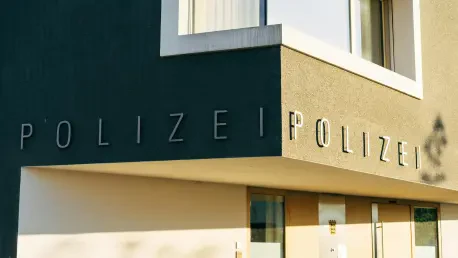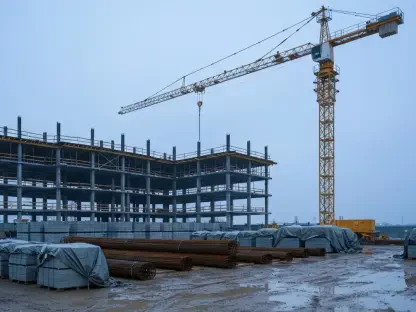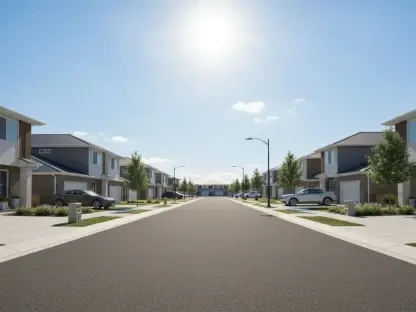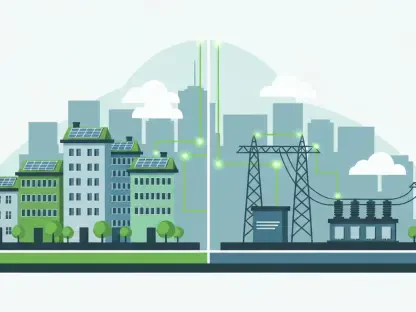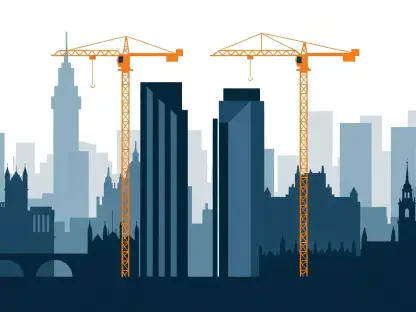Plans for a new Wilmette police station have become the center of an important dialogue between community members and government officials as they contemplate the delicate balance between tradition and modernity. This dialogue highlights the need for the structure to both serve contemporary needs and reflect the character of its surrounding neighborhood. The project, which is in a critical design and approval phase, stands as a focal point, bringing together various stakeholders to ensure the construction aligns with community expectations while meeting functional requirements.
Key Concerns and Design Adjustments
Balancing Aesthetic Appeal and Functionality
In July’s formal check-in, discussions concentrated on how the new police station’s aesthetic could be seamlessly integrated into the neighborhood’s fabric. Concerns over its initial design, which featured a stark, industrial look, sparked calls for revisions to reflect a more residential appearance. Both the Wilmette Appearance Review Commission and the village trustees advocated for changes that would honor the neighborhood’s existing architectural language. Notably, Trustee Gerry Smith expressed the need for a design that resonates with the community’s identity, a sentiment reinforced by Trustee Justin Sheperd, who highlighted the importance of visual harmony and neighborhood integration.
Central to these discussions is the thoughtful application of building materials, the massing of the structure, and the integration of sufficient landscaping. These elements are vital to achieving a design that is not only visually appealing but also functional and welcoming. The input from village trustees, thanks to their intrinsic understanding of community preferences, plays a crucial role in shaping the evolving design.
Progress Achieved and Challenges Ahead
The evolution of the project’s design is highlighted by the progress acknowledged by officials. Village President Senta Plunkett commended the improvements made thus far, crediting the input from both community members and review commissioners. Despite these advancements, challenges remain in ensuring the project’s alignment with both community standards and functional requirements. The familiar location of the station, deeply embedded within the community for over six decades, adds another layer of complexity, as the new design must honor this historical continuity while forging a path forward.
The appearance review commission’s forthcoming session scheduled for early August aims to continue refining the design. Key agenda items include an evaluation of the building’s site plan, floor configurations, and sustainability features. However, while substantive progress has been made, approval of the final exterior design is still pending as discussions focus on maintaining a balance between innovation and tradition.
Roadmap to Construction
Structured Phases and Timelines
The structured municipal approval process divides the project into distinct phases, allowing for iterative refinement. The design will undergo a series of formal checkpoints, beginning with a reevaluation of costs, originally updated in April to $50.5 million for a projected facility size of approximately 53,000 square feet. Subsequent checkpoints, timed for construction documentation stages reaching both 50% and 95% completion, will help ensure that all project elements undergo thorough scrutiny before final approval.
By adopting such a phased approach, Wilmette officials aspire to issue a request for contractor qualifications. Redevelopment prerequisites, such as rezoning efforts, are expected to commence in the upcoming month, with the aim of finalizing exterior planning by early September. If the envisioned timeline succeeds, foundation work may begin in spring of the subsequent year, marking a significant milestone in the project’s lifecycle.
The Role of Stakeholder Engagement
Future steps in the approval and construction process will heavily rely on continued engagement with all stakeholders, including residents, officials, and contractors. By fostering transparent communication and incorporating diverse perspectives, the project can address both practical necessities and community aspirations. This involvement ensures that each phase reflects the combined wisdom and values of the Wilmette community.
The project’s alignment with community sentiment is further enhanced by conducting transparent updates and fostering ongoing dialogues with residents, thus maintaining trust and ensuring that the new police station retains its role as a harmonious addition to the village’s landscape. This model demonstrates a commitment to engaging with and respecting the community, setting a precedent for other municipalities undertaking similar ventures.
Crafting a Sustainable Conclusion
Intersection of Tradition and Advancement
The Wilmette police station project serves as a valuable case study in balancing modern sensibilities with traditional values within municipal planning. The design plans being adjusted reflect a dedication to understanding and preserving community identity while simultaneously addressing practical needs of efficiency and sustainability. This dynamic interplay between the conservation of history and the embrace of modernity is a testament to the careful consideration required in projects of similar scale and social significance.
As these collaborative efforts progress, the Wilmette community can anticipate a facility that not only meets operational demands but also fosters a sense of belonging and pride among residents. By embracing a cooperative design process, the parties involved are well-positioned to craft a space that resonates with the community’s historical context while serving its burgeoning needs.
Relevance to Broader Municipal Planning
The proposed Wilmette police station is at the heart of significant discussions involving community members and government officials. These conversations focus on how best to balance the preservation of traditional elements with the demands of modernity. As plans progress, there’s a clear emphasis on constructing a facility that meets contemporary needs while harmonizing with the local character of the neighborhood. This project is currently in a crucial phase, both in terms of design and securing necessary approvals. As such, it has become a central point of interest, bringing together multiple stakeholders. Their collective goal is to ensure the new building not only meets all functional requirements for a modern police department but also aligns with the expectations and values of the Wilmette community. This dialogue reflects broader themes seen in many towns, where development and tradition often find themselves in a delicate dance, aiming to strike a balance that satisfies various interests and preserves the town’s identity while fostering progress.
